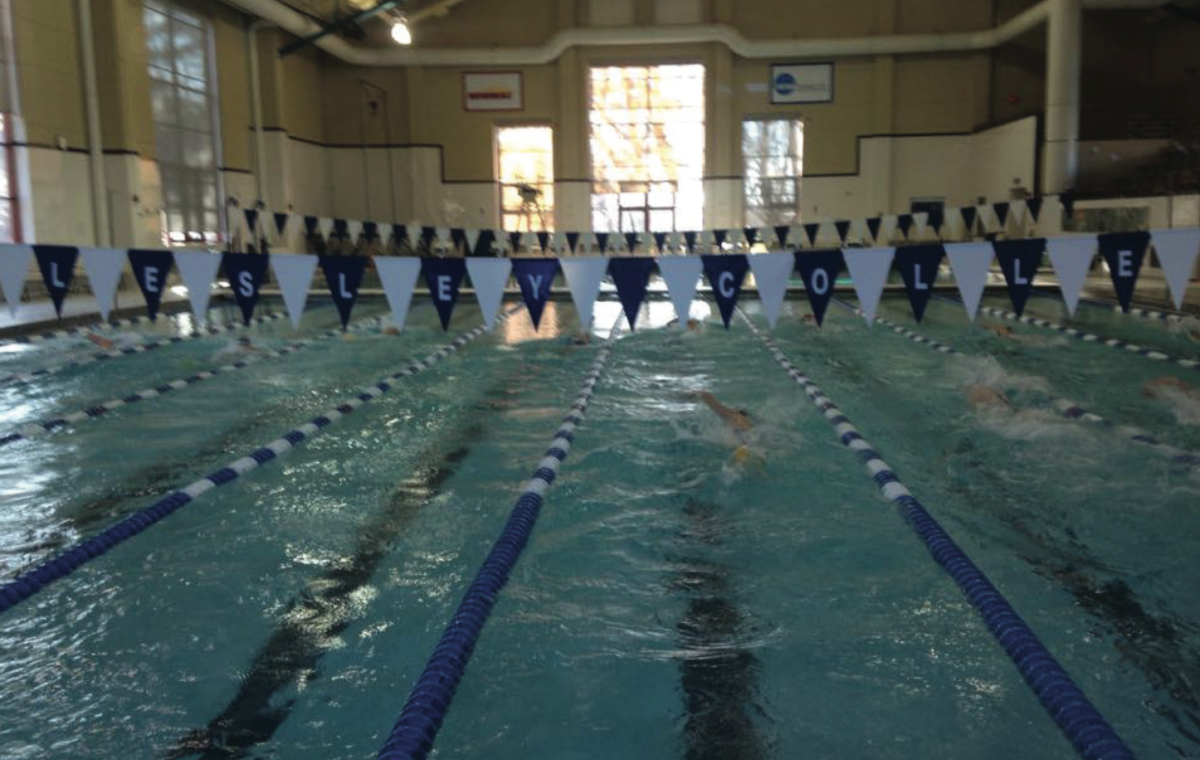While most people get their exercise from a variety of workouts through running, cardio classes or the elliptical machine, it can be incredibly beneficial to mix up your cardio routine with a workout in the pool. Long-distance swimming is certainly less common than long-distance running but offers many of the same benefits and lacks many of the risks associated with running.
Swimming initially seems like more of an effort because it requires getting wet, but it is actually one of the cheapest exercise options. All one requires is a swimsuit and a towel, which can be provided by the Keohane Sports Center. While a swim cap and goggles are not essential they certainly help add to the ease and comfort of the swim experience. The Chandler Pool in the KSC, which has eight lanes for competitive swimming, has open swim hours from 11:30 to 1:30 pm and 6 to 7:30 p.m on weekdays. The pool has eight lanes for competitive swimming and one- and three- meter diving walls.
Swimming is one of the best cardiovascular exercises. Unlike most other aerobic exercises, swimming gives you the ability to work your body without the harsh impact to your skeletal system. Long distance running without correct form can often strain the skeletal system, especially the knees. In swimming however, thanks to the buoyant force of water, your body only supports 50 percent of your weight, lightening the load on your skeletal system while giving you the same cardiovascular impact of running without the negative strain of your joints. Swimming is the ideal workout for overweight people who find it hard to use traditional workout machines.
Swimming also is an excellent combination of stretching your muscles, strengthening your muscles and cardiovascular exercise. Unlike most gym machines, which focus primarily on one muscle group, swimming is a full body workout that uses every major muscle group and many smaller muscles not often targeted on land. Most swimming strokes include a stroke where you reach your hands over your head, stretching your arm and back muscles and increasing the flexibility of the joint in your rotator cuff. Most properly performed swim strokes include repetitive and wide arm motion, which provides a good form of upper-body exercise. While running and biking’s emphasis is primarily on the legs, swimming requires more extensive arm workout that can help overall body strength. Swimmers also build muscle at a more efficient rate than runners and bikers. While runners and bikers move against the force of air, swimmers move through water, which is 12 times denser than air and has more resistance, strengthening the muscles faster.
Swimming is also often recommended for people who suffer from asthma. Often times, exercise-induced asthma attacks are not caused by the aerobic exercise but the dry, dusty environment. The moist, wet environment of the pool puts less strain on the body and is less likely to induce an asthma attack. In addition, the ability to hold your breath underwater is essential to swimming and can help strengthen your lungs, which is something helpful for everyone, not just those with asthma.
However, finding an efficient swim workout is slightly more difficult than finding a running workout. There are far fewer resources to develop a good swim workout. In addition, because water is harder to get through than air, improper form can lead to overexertion. Although improper swim form will not strain your muscles and lead to injury in the same way as running, it will still prevent you from getting the maximum benefit from your workout. If you are worried about form, Wellesley College offers adult swim classes several days a week starting at $120 for 4 one-hour sessions. For those who know how to swim but need to reinforce their knowledge, there are many swim technique resources at active.com/swimming.
Photo Courtesy of Wellesley College Swimming & Diving




